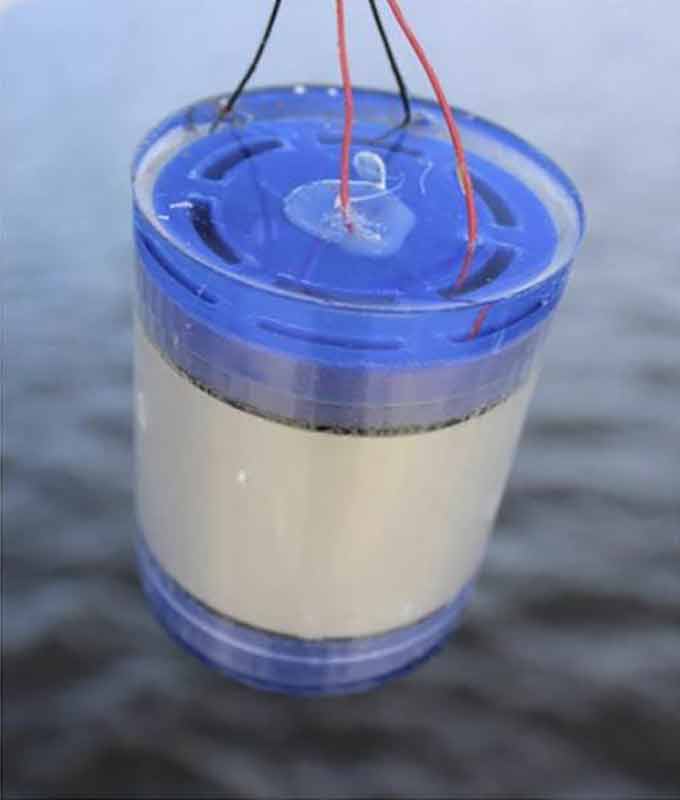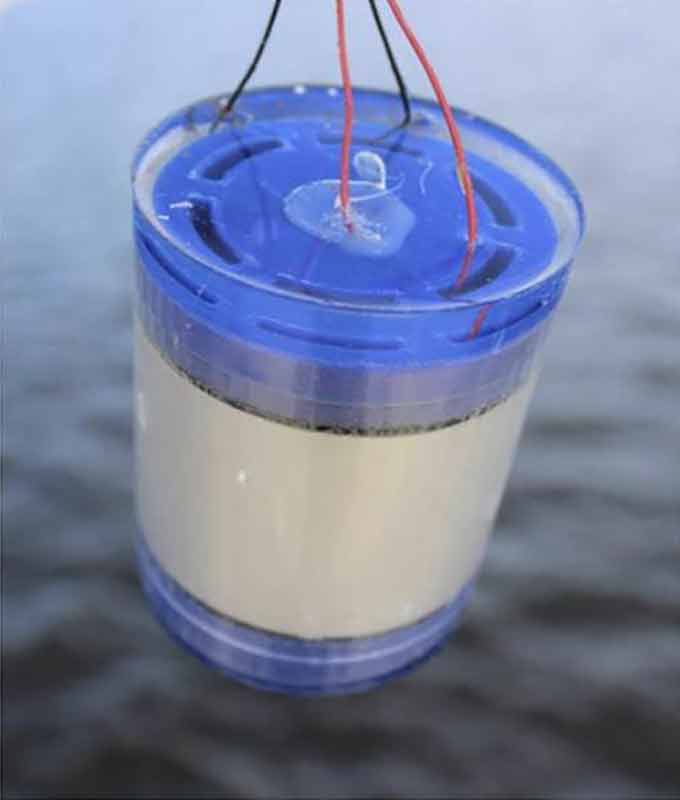Imagine an underwater camera that could take photos anywhere in the sea. Until now, use of underwater cameras has been limited. Some must be hooked up to power cables. Others rely on batteries, which don’t tend to last long. Such limits have kept scientists from exploring most of the ocean world. But now researchers have found a way around these problems. They’re powering a new camera with sounds — ocean sounds.
Freeing undersea cameras from the limits of power cords and battery lifetimes could let them monitor far more of the ocean’s largely hidden world. Keep in mind, the ocean is “the largest driver of climate change,” Waleed Akbar says. “The fact that you know little about it — it’s alarming and it’s astonishing at the same time.”
Akbar is a graduate student in electrical engineering who helped build the new camera. He and his colleagues at the Massachusetts Institute of Technology (MIT) in Cambridge described this innovation September 26 in Nature Communications.
Akbar hopes biologists will one day use this camera to keep an eye on coral reefs. Fish-farmers might use it track the growth and health of their livestock. And maybe a little further out in time, the camera might find use beyond Earth. Spacecraft might rely on a sound-based camera to explore the oceans of Saturn’s moon Enceladus.
Zhiqun Daniel Deng does think this system will be useful, although he’s unsure about the value of such a camera in space. Deng works at Pacific Northwest National Laboratory in Richland, Wash. He’s an engineer and ocean scientist who was not involved in the new research. Sending information underwater today uses a lot of energy, he notes. The new camera could overcome that. As such, he says: “I’m impressed.”
Powered by sound
Explainer: How batteries and capacitors differ
The camera has two sensors on the bottom. Each is made of multiple layers of a piezoelectric (Pee-AY-zoh-ee-LEK-trik) material. When sound travels through the water, it creates waves of pressure. These cause the sensors’ material to vibrate. And the piezoelectric material converts those vibrations into electrical energy. A supercapacitor stores this energy. A capacitor can be compared to a reusable battery (one that stores energy in an electric field).
Once the capacitor has enough energy, it turns on the camera and takes a picture. Then, it lets the second sensor tap into more sound energy to relay the camera’s image — as sound — to some underwater microphone or receiver. In this way, the sensors not only power the camera, but also broadcast the data carrying its images.

The sea is noisy. And that ensures there’s always a ready source of power for the new camera. Any sound can power it — from swimming fish to a passing ship. But why two sensors? One can focus on collecting energy for the camera while the other focuses on communication, says Akbar. Either sensor can do the energy harvesting or image broadcasting.
How quickly the system takes to recharge depends on how loud and close the sound is that powers it. In a fairly quiet setting, the camera will take longer to charge — about 10 to 12 seconds — before it can take each image. With improved sensors, Akbar hopes the camera will charge in less than a second, even using sounds from more than 100 meters (about 325 feet) away.
Using sound to both run the camera and transmit its images keeps the new system’s costs and power needs low. Akbar says that the camera cost his team only about $300 to build.
Take a pic
For its prototype, the MIT team powered their system with noise from an underwater speaker.
To record an image, the camera flashes a series of red, blue and green lights. The system then combines what it sees into a single color photo. Having an onboard light source really helps view what’s going on in dark parts of the ocean, Akbar says.
To communicate, the camera has an internal switch. It controls whether a sensor uses incoming energy (sounds) for broadcasting. That switch is kind of like a mirror being moved into and out of position. In fact, like a mirror, each sensor can reflect the incoming sound. When the little “mirror” is out of position, the sensor simply absorbs incoming sound. When that little “mirror” is in position, the system will use some reflected sound to carry the photo’s digital data to a waiting microphone.
That underwater receiver picks up the camera’s broadcast and assembles the data into an image. And with that — voila — the undersea photo shoot is done.


